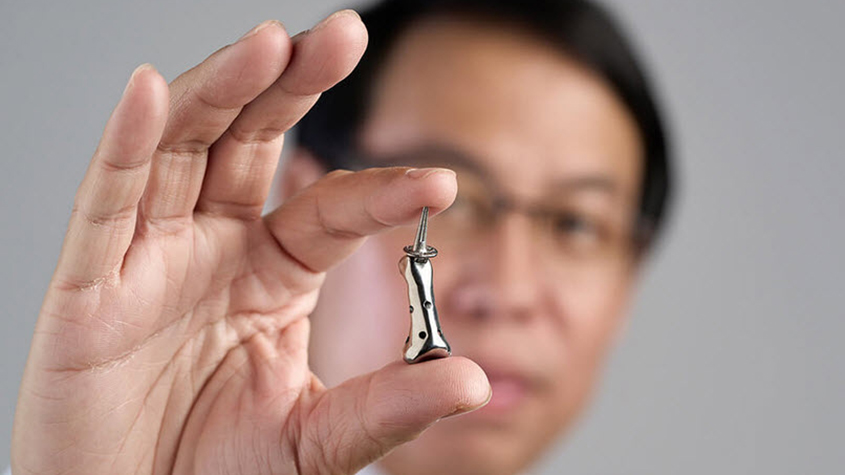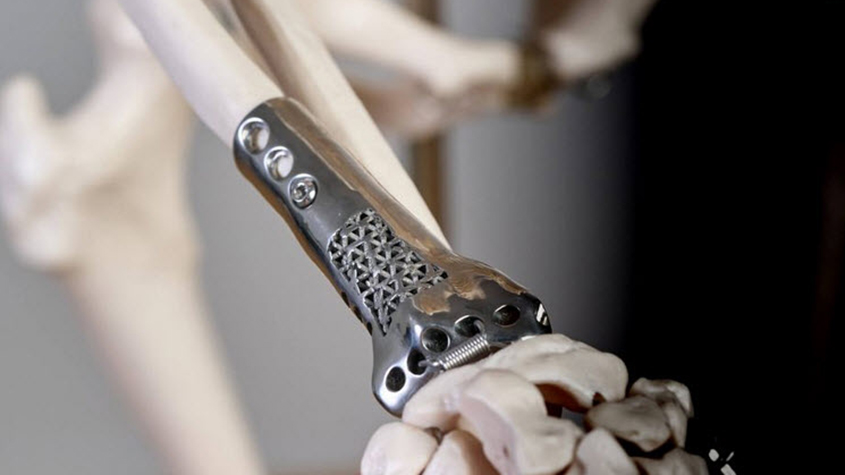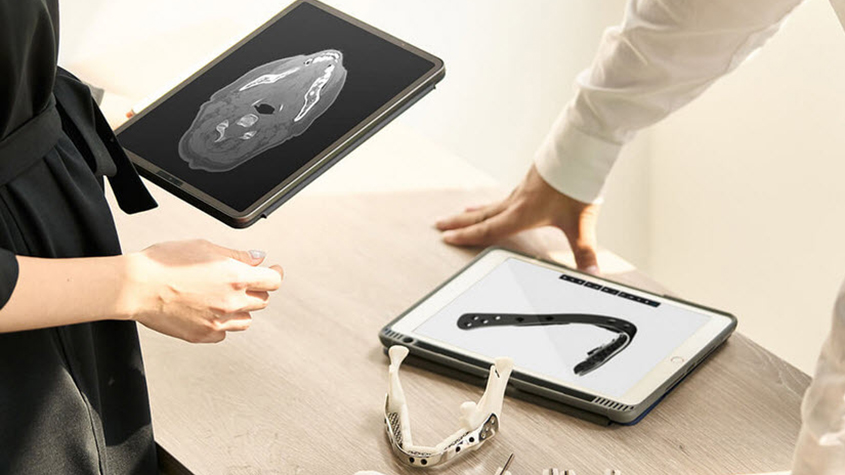When Chedtha Puncreobutr came back to his home country, Thailand, in 2014, after his Ph.D. in metal 3D printing at the Imperial College of London, United Kingdom, he wanted to put the revolutionary technology to good use. A few years later, patients in Thailand can benefit from the 3D-printing expertise of Meticuly for bone replacement.
A metallurgical expert, Chedtha became an assistant professor at Chulalongkorn University, in the metallurgical engineering department where he worked alongside his colleague Boonrat Lohwongwatana, an associate professor. “We both shared the same technical knowledge, and the passion to find ways to use the technology to help people.” They settled on medical devices and in particular bone replacement. Neither had previous knowledge of medical devices and they conducted further research to find out which materials can be safely used in people.

After consulting with doctors, and in particular, with an orthopedic surgeon, working hand in hand with them, they refined their invention and in 2015, they delivered their first 3D-printed thumb metacarpal bone. That success prompted the launch of Meticuly, as a spin-off of Chulalongkorn University. Meticuly, after “meticulously”, is one of the very few tailored 3D printed implants companies in the world.
Four Steps to create Meticuly 3D Printed Bone
Off-the-shelf bone implants usually come in three sizes: small, medium, and large. The surgeon and his team then have to shape and carve implants to fit the patient’s body in the operating theater.
This is where personalized healthcare comes in as a life-changer for both surgeons and patients. “I believe personalized medicine is the new way of treatment”, Chedtha emphasized.
Meticuly’s process is essentially articulated around four steps.
The first one is a tomography (CT) scan from patients, whether they need bone implants following a medical condition such as a tumor, or are accident victims.
The second one is the construction of a 3D model through an artificial intelligence-assisted program. The data from the CT scans are fed to an AI engine, which converts those data into a 3D model. “It is not something that people have done in the past because it takes some time to convert these CT Scans and make it into a 3D model”, according to Chedtha. The AI system is constantly trained with data so that it learns how to segment, and design models. This machine learning speeds up the conversion process as well as the accuracy, he said.
The third step is the actual 3D printing through a machine that melts titanium powder, layer by layer, to create a solid part. “We can basically create any shape using this technology”, Chedtha said.
After the printing, the implant is checked and sterilized before being delivered to the hospital, which is the fourth step. The time needed to complete the four steps is an average of 7 days.

Scalable Technology for 3D Printing Bone Replacement
Meticuly aims at replicating the structure of the bones. Titanium is a strong and hard metal, which is much denser than natural bones. Were the implants very thick and solid, they would be too strong and heavy. The perforated patented pattern designed by Meticuly, is strong but yet very light and imitates the property of bones. It also allows X-rays after surgery.
“The technology is scalable, we can help many people at the same time”, noted Chedtha.
In the beginning, Meticuly had to limit the size of implants it could produce and started with the small bones of the hands for easier control of the printing. The printing controls have about 30 to 40 parameters to ensure the successful 3D printing of each part, explained Chedtha. “We are now able to print bigger parts.”
Meticuly’s range of implants is mainly for cranial and facial replacements. In Thailand, Chedtha said, many people use motorcycles without wearing helmets, which leads to many accidents, and head/face injuries. The company also started to work on hips and spine implants.
Over 580 patients have received a Meticuly implant thus far. The company hopes that it can expand its business so many more people can benefit from its technology. Meticuly is expanding its staff with now more than 50 people.
The company is trying to keep prices affordable so many patients can benefit from its technology. At the moment, Meticuly’s implants are slightly more expensive than the imported fixed-sized implants, Meticuly’s implants however are 4 to 10 times cheaper than the few other 3D printed implants that could be imported.

Challenges Meticuly faced when introducing the Technology to Surgeons
Initial fundamental research was carried out with funding from Chulalongkorn University. The funding supported research on the biocompatibility of titanium for use on patients, how to test it, how to make sure the patient’s body would not reject it.
“The challenges we met came from two directions”, said Chedtha, the first of which was introducing the technology to surgeons, and in particular the production time frame. The technology had to be safe and available in a short period to be useful for them.
The second challenge came from the commercialization of implants. “3D-printed bone implants are a new technology and we had to work hand-in-hand with surgeons and entice them to change the way they work, win their trust. It was not easy for researchers like us.”
To win surgeons’ trust Meticuly went for certifications, starting with the Thailand Food and Drug Administration (TH-FDA) certification. They then applied for the highest ISO standard for medical device manufacturing: ISO 13485, a global certification awarded in 2018. The company recently received an US FDA 510(k) clearance, the United States FDA certification, for 3D-printed Patient-specific Cranial Mesh and Craniofacial Mesh.

Meticuly’s IP – lining up to offer global access to 3D Printing Surgery
Meticuly, which is a registered trademark, owns 18 IP assets, including six invention patents registered through the Patent Cooperation Treaty. Two invention patents have been filed under the Chulalongkorn University name and were then licensed to Meticuly, three invention patents are owned by Meticuly, and one is jointly owned by Meticuly and the university. Meticuly also has twelve trade secrets on control parameters for printing.
In the next five years, Chedhta and Boonrat, now 35 and 44, would like to help many more people, not only in Thailand. “We would like this technology to be accessible to everyone, in many more countries. We would also like to see this technology as a standard for personalized treatment.” Meticuly is currently focused on the Asian market but would like to move forward to the European Union and the U.S.
3D printing is not only for titanium, bioprinting may be just around the corner.
Source: WIPO

 Client Focus
Client Focus